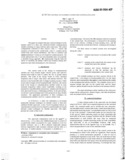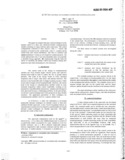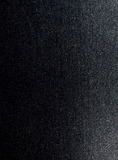Design of Multi-Mission Spacecraft BUS
| dc.contributor.author | Agrawal, B.N. | |
| dc.date | February 3-6, 1992 | |
| dc.date.accessioned | 2013-07-18T19:18:18Z | |
| dc.date.available | 2013-07-18T19:18:18Z | |
| dc.date.issued | 1992 | |
| dc.identifier.citation | AIAA Aerospace Design Conference, Irvine, CA, February 3-6, 1992. | |
| dc.identifier.uri | https://hdl.handle.net/10945/34476 | |
| dc.description | The article of record as published may be found at http://dx.doi.org/10.2514/6.1992-980 | en_US |
| dc.description.abstract | This paper investigates alternate control techniques for the attitude control of a three axis stabilized flexible communications satellite consisting of a large reflector and a solar array. The control configurations consisted of three classes: Class 1 - sensors and actuators co-located on the central body, Class 2 - actuator on the central body and sensors distributed, and Class 3 -actuators and sensors distributed. Criteria are developed for modal truncation. The results indicate that Class 2 can cause instability and. is not generally a desirable design approach. An experimental setup to study the effects of flexibility on attitude control per-formance during slew maneuvers and wheel desaturation is also discussed. This paper investigates alternate control techniques for the attitude control of a three axis stabilized flexible communications satellite consisting of a large reflector and a solar array. The control configurations consisted of three classes: Class 1 - sensors and actuators co-located on the central body, Class 2 - actuator on the central body and sensors distributed, and Class 3 -actuators and sensors distributed. Criteria are developed for modal truncation. The results indicate that Class 2 can cause instability and. is not generally a desirable design approach. An experimental setup to study the effects of flexibility on attitude control per-formance during slew maneuvers and wheel desaturation is also discussed. This paper investigates alternate control techniques for the attitude control of a three axis stabilized flexible communications satellite consisting of a large reflector and a solar array. The control configurations consisted of three classes: Class 1 - sensors and actuators co-located on the central body, Class 2 - actuator on the central body and sensors distributed, and Class 3 -actuators and sensors distributed. Criteria are developed for modal truncation. The results indicate that Class 2 can cause instability and. is not generally a desirable design approach. An experimental setup to study the effects of flexibility on attitude control per-formance during slew maneuvers and wheel desaturation is also discussed. This paper investigates alternate control techniques for the attitude control of a three axis stabilized flexible communications satellite consisting of a large reflector and a solar array. The control configurations consisted of three classes: Class 1 - sensors and actuators co-located on the central body, Class 2 - actuator on the central body and sensors distributed, and Class 3 -actuators and sensors distributed. Criteria are developed for modal truncation. The results indicate that Class 2 can cause instability and. is not generally a desirable design approach. An experimental setup to study the effects of flexibility on attitude control per-formance during slew maneuvers and wheel desaturation is also discussed. This paper investigates alternate control techniques for the attitude control of a three axis stabilized flexible communications satellite consisting of a large reflector and a solar array. The control configurations consisted of three classes: Class 1 - sensors and actuators co-located on the central body, Class 2 - actuator on the central body and sensors distributed, and Class 3 -actuators and sensors distributed. Criteria are developed for modal truncation. The results indicate that Class 2 can cause instability and. is not generally a desirable design approach. An experimental setup to study the effects of flexibility on attitude control per-formance during slew maneuvers and wheel desaturation is also discussed. This paper investigates alternate control techniques for the attitude control of a three axis stabilized flexible communications satellite consisting of a large reflector and a solar array. The control configurations consisted of three classes: Class 1 - sensors and actuators co-located on the central body, Class 2 - actuator on the central body and sensors distributed, and Class 3 -actuators and sensors distributed. Criteria are developed for modal truncation. The results indicate that Class 2 can cause instability and. is not generally a desirable design approach. An experimental setup to study the effects of flexibility on attitude control per-formance during slew maneuvers and wheel desaturation is also discussed. | en_US |
| dc.rights | This publication is a work of the U.S. Government as defined in Title 17, United States Code, Section 101. As such, it is in the public domain, and under the provisions of Title 17, United States Code, Section 105, is not copyrighted in the U.S. | en_US |
| dc.title | Design of Multi-Mission Spacecraft BUS | en_US |
| dc.contributor.department | Department of Mechanical and Aerospace Engineering |





